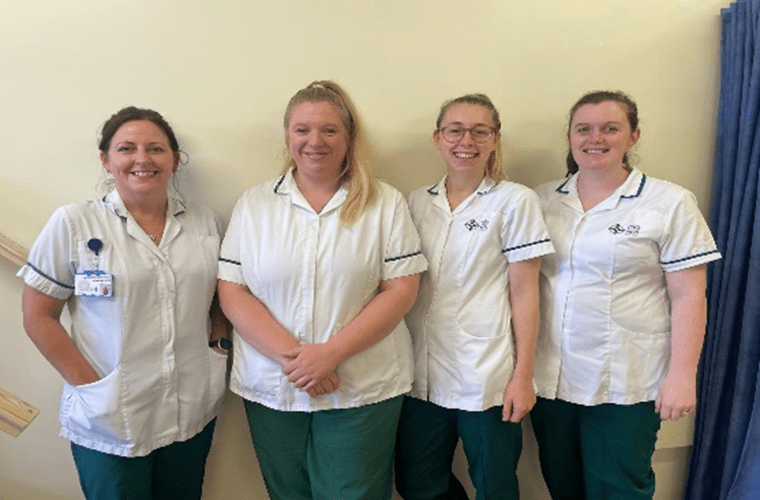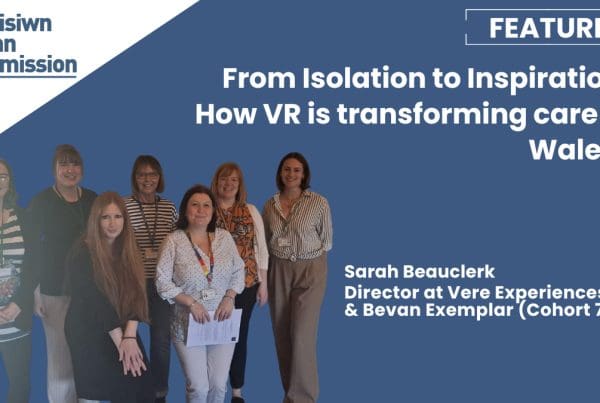When long referral processes and growing waiting lists left patients and staff struggling, Clinical Lead Occupational Therapist at Betsi Cadwaladr University Health Board (BCUHB), Heather McNaught, set out to find a better way. Supported through the Bevan Exemplar Programme, Heather and her team developed a project to align Occupational Therapists (OTs) directly within GP practices — delivering timely, person-centred care closer to home. The result was shorter waits, stronger relationships, and better outcomes for both patients and professionals.
Tackling Long Waits and Frustration
Community OT services across North Wales were facing long delays caused by complex referral systems. Referrals were initially handled through a Single Point of Access (SPOA), where they were triaged between health and social care before being passed to community teams. This multi-step process meant patients often waited up to six weeks before even being added to the waiting list, with routine waits averaging 13–14 weeks in total.
While urgent cases were prioritised, many patients with routine needs deteriorated during the wait or tried to manage independently. Staff were frustrated and morale was low. It became clear that the process needed to be redesigned to provide faster, fairer access to occupational therapy support.
A New Model: Embedding OTs in Primary Care
The disruption caused by the COVID-19 pandemic offered an opportunity to rethink how care was delivered. Heather and her team piloted a model aligning OTs directly within primary care clusters, creating a more visible and accessible presence for both GPs and patients.
Working with a supportive Clinical Director who was also a practising GP, the team introduced a dedicated email mailbox for direct health-to-health referrals, simplifying the process and removing the reliance on paper-based systems. Referral forms were streamlined, criteria refined, and OTs began attending practice meetings to offer advice and early input.
Being embedded within GP practices helped build strong working relationships and raised awareness of the OT role in supporting patient independence. Following the success of the pilot, the model was scaled up across Wrexham and parts of Flintshire, supported by the Bevan Exemplar Programme.
“It wasn’t about new money or resources,” Heather explains. “It was about working smarter — changing the pathway, strengthening relationships, and bringing care to where it was needed most.”
Improving Access, Experience, and Wellbeing
The redesign led to significant improvements in access and efficiency.
- Average waiting times reduced by nine weeks, with the longest waits now around four weeks.
- Time from referral to receipt improved from 10 days to 1.5 days.
- Assessment-to-discharge times shortened from 17 weeks to nine weeks.
- Urgent referral rates fell from 6.5 per week to 2.5 per week.
For patients, faster access meant earlier intervention and greater independence:
- 52% reported a major improvement in their main complaint, with a further 33% reporting moderate improvement.
- 63% said the service had a major impact on their ability to bathe independently.
- 64% regained confidence leaving and entering their homes.
- 72% were able to access toilet facilities independently.
- 75% reported overall improvements in wellbeing and reduced dependence on others.
Behind these figures are people regaining the confidence to live independently — from showering safely to leaving their homes without support.
For staff, morale rose significantly. Working within GP practices gave OTs greater autonomy and more direct collaboration with other health professionals. The ability to communicate through systems like EMIS and attend cluster meetings helped break down silos and improved multidisciplinary working. The service remained cost-neutral to GP practices — achieved by reallocating existing resources rather than increasing staffing or expenditure.
Reflections on the Bevan Exemplar Experience
Participation in the Bevan Exemplar Programme provided the team with the structure and momentum they needed to move from local pilot to sustainable service change. The programme helped them to measure impact systematically, share results effectively, and showcase their learning across Wales.
The project was subsequently showcased at several events, inspiring other teams to rethink their referral pathways and consider the benefits of embedding allied health professionals within primary care. The experience also encouraged Heather to take on a national role as Co-Chair of the All Wales Primary Care OT Network, helping to share good practice and connect services across health boards.
Next Steps and Future Ambitions
Building on the success of the Bevan Exemplar project, BCUHB has since secured Welsh Government funding for early-intervention OTs to work with people living with heart failure and other long-term conditions in primary care. These posts focus on prevention and condition management — keeping people well for longer and reducing hospital admissions.
At the same time, the community OT team continues to evolve. With shorter waiting lists and more efficient pathways, they now have the capacity to focus on proactive and preventative interventions rather than reacting to crises. Heather’s goal is to strengthen the role of occupational therapy in addressing gaps in community provision, aligning closely with Wales’ commitment to prudent and value-based healthcare.
Sustainability remains high, with staff fully engaged and motivated to maintain the improved model.
A Lasting Legacy
From long waiting lists and frustrated staff to a proactive, responsive, and patient-centred service, this project exemplifies the power of innovation from within. By embedding OTs into primary care, Heather and her team have shown how small, intelligent changes can transform the way services are delivered and experienced. The skills and knowledge from the Bevan Exemplar programme have continued to support ongoing service change, improving patient outcomes and staff experience.
This work reflects the very essence of the Bevan Exemplar ethos — empowering frontline professionals to identify challenges, test solutions, and deliver prudent, sustainable change. Its success stands as a model for how innovation rooted in everyday practice can strengthen the health and care system across Wales.






